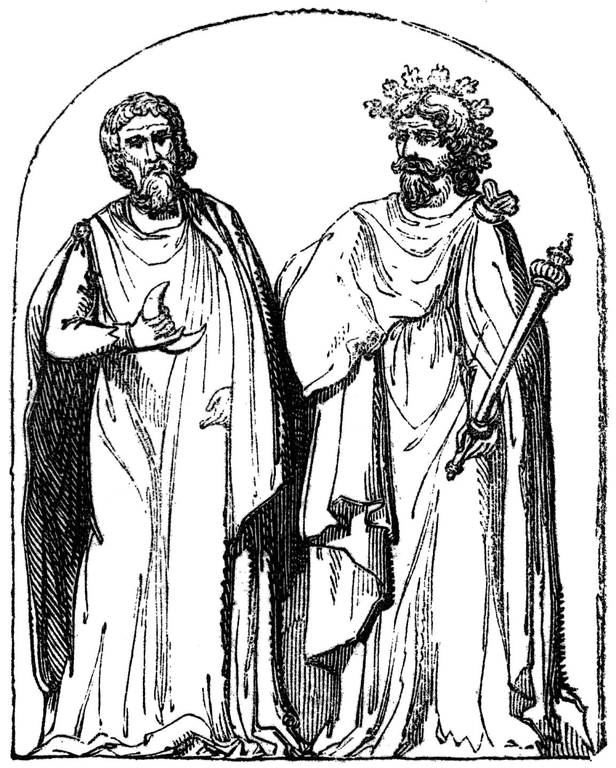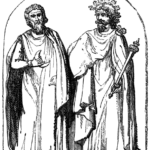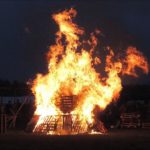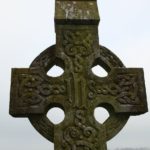When talking about Celtic polytheism, one can also refer to Druidism, (the druids being the priests, teachers, law officers and doctors in the Celtic culture. Celtic spirituality refers to the beliefs to pre-Christian Gaul, Britain, Ireland, Scotland, Iberia (Spain), some parts of Germany, and Galatia (Anatolia) which the Gaul invaded during Antiquity. Nowadays, a Celtic revival has brought back the values, traditions, and way of life believed top have been those of the pre-Christian Celts.
It is, however, difficult to know exactly what the spirituality of Celtic was: they were an oral tradition people who didn’t record their spirituality. The only source of knowledge we possess in about them is in reference with the roman culture, whom assimilated the Celtic culture during the conquest of Gaul in 5851 BC and Britain in AD 43 Most of the knowledge we have from the Celtic culture of this era comes from the famous Julius Caesar, in his commentaries of the Gaul war. Pliny and Cicero also describe some of the beliefs of the Celts. Later with the Christianization of Ireland, Scotland and the Roman Empire, references to Druidism are made by monastic Christian scholars and missionaries. (AC 7th century).
difficult to know exactly what the spirituality of Celtic was: they were an oral tradition people who didn’t record their spirituality. The only source of knowledge we possess in about them is in reference with the roman culture, whom assimilated the Celtic culture during the conquest of Gaul in 5851 BC and Britain in AD 43 Most of the knowledge we have from the Celtic culture of this era comes from the famous Julius Caesar, in his commentaries of the Gaul war. Pliny and Cicero also describe some of the beliefs of the Celts. Later with the Christianization of Ireland, Scotland and the Roman Empire, references to Druidism are made by monastic Christian scholars and missionaries. (AC 7th century).
Some of the beliefs and rituals that the Celtic people shared were:
-a belief in the afterlife;
-a belief in animism they believed that plants, tree, animals, and other material things possessed a powerful spirit;
-A belief in a pantheon of gods who shares powers over the material world.
-They performed sacrifices to spirits and to the gods.
The most important gods of the Celtic pantheon are:
THE DAGDA
Dagda is the supreme god of the Celtic pantheon, all-powerful and mighty. Dagda is a father-figure who protects the tribe. He is often presented armed with a club and represented with a cauldron, a symbol of abundance and a magical harp.
DANU
Danus is the mother figure in the Celtic pantheon. She is a patron of the Tuatha De Danann and she is believed to have created wisdom, rivers, and wells. She may be one on the oldest godly figures in the world as she also appears in India. This would make her a Proto-Indo-European goddess, dating as far back as 10 000 BC.
LUG
Lug is assimilated to Mercury. He is the messenger, the inventor of all arts and crafts. He may have had a role as god of sovereignty. He is usually depicted accompanied by a ram and/or a rooster, and carrying a caduceus. Lug oversees the festival of Lughnasadh, celebrated on the first of August. The cult of Lug is attested throughout the Celtic world.
TOUTATIS
Toutatis is assimilated to Mars. He is the god of war and of the tribe. In roman reports, it is said that many sacrifices were made to Toutatis: sacrificial used to be drowned or suffocated in his honor. He most likely accompanied the tribe to war to ensure victory against enemies.
TARANIS
Taranis is compared to Jupiter. Represented with a thunderbolt in one hand and a wheel in the other, he seems to have been the god of weather, storms, thunder, and lighting.
CERNUNNOS
Cernunnos is associated with horned male animals, especially deer, and the rams; He was himself a honed god, and as such is closely associated with power, fertility, nature, and sovereignty. Deities of this type are represented all over the world, especially in India, Greece and the Minoan culture. It is believed that Cernunnos may be one of the oldest gods of the world, dating from the proto-Indo-European culture, who dates back to 10 000 BC.
BRIGID
Brigid is the goddess of healing, poetry, and smithcraft. She associated with the goddess Minerva. She presided to many healing springs and wells over the Celtic realm. She is the goddess of all things of high dimensions such as high-rising flames, highlands, hill-forts, and upland areas, as well as spiritual things like wisdom, intelligence, eloquence, blacksmithing, healing, druidic knowledge and warfare. She was one of the most popular goddesses of the Celts, and many of her attributes have survived today the St-Brigit.
BENELOS
Benelos was assimilated to Apollo. He is the bringer of light, associated with heat, healing, with cattle, sheep, and crops. He was the god invoked during the festival of Beltane.
AIRMED
Airmed collected and organized herbs; she is believed to have presided to the healing art of herbalism, popular science to Celtic healing arts. She was part of Tuatha de Danann.
OGMA
Ogma is the god of scholars, teachers, education, poetry, writing, and eloquence. He is believed to have invented the Irish Alphabet.
EPONA
A rare goddess that was also venerated by the Romans, Epona was a goddess of fertility and presided over domestic animals like horses, donkeys, mules.
TUATHA DE DANANN
The Tuatha are the children of goddess Danu. They are mythical heroes and kings who possess occult skills. Their leader is Nuada. They are believed to have fought the Battles of Magh Tuiredh, epic battles of the possession of the Irish land. The Tuatha De Danann are believed to have brought four magical treasures with them to Ireland: Dagda’s Cauldron, the Spear of Lugh, the Stone of Fal and the Sword of Light of Nuada. These objects are represented today in the deck of a card by the suits.
There numerous other gods mentioned in the miscellaneous sources. They are however not as widely represented, or scarce information is available on them.
REFERENCES
Beliefnet.org, http://www.beliefnet.com/index/index_10060.html
Wikipedia, “List of Celtic deities”, http://en.wikipedia.org/wiki/Celtic_gods






